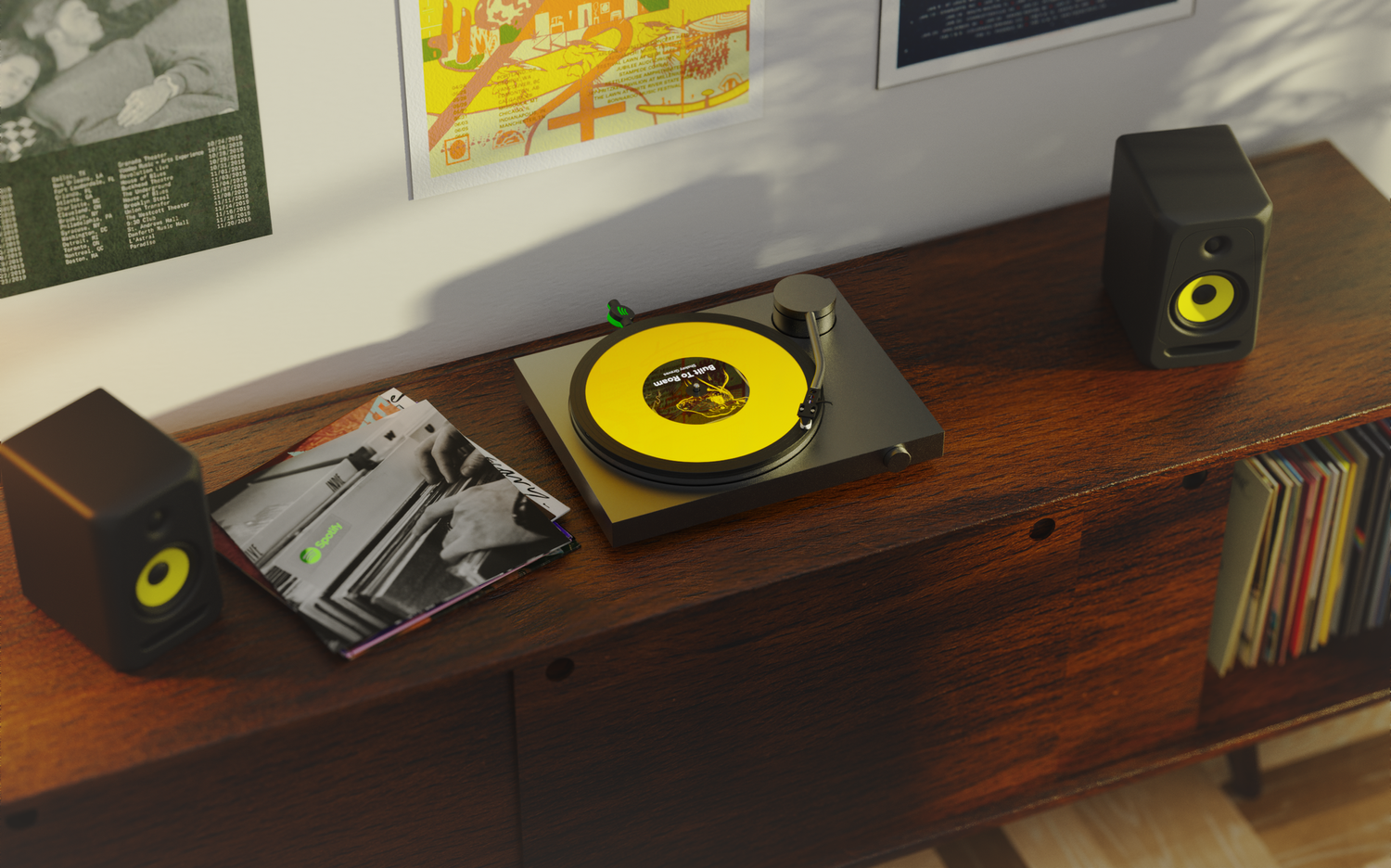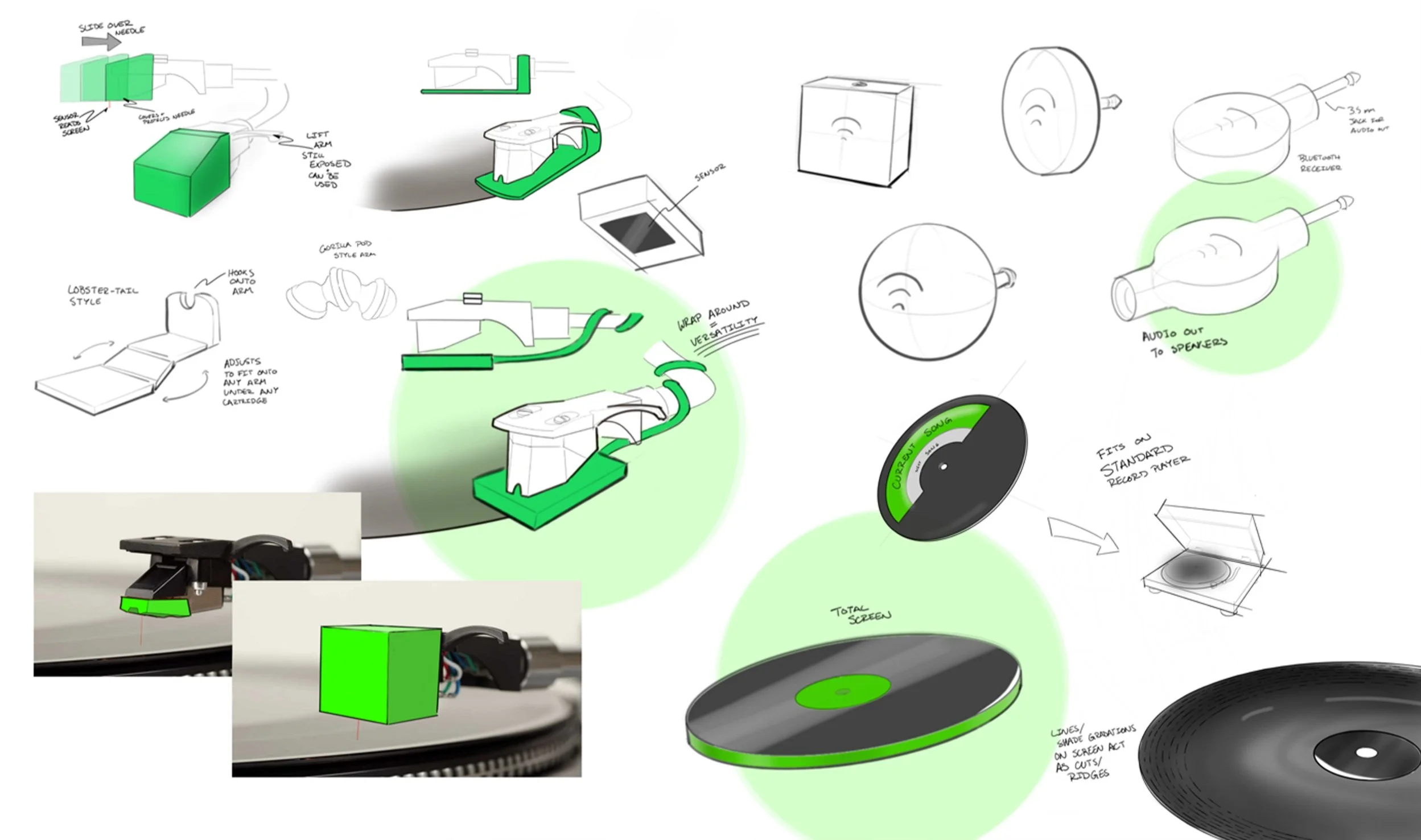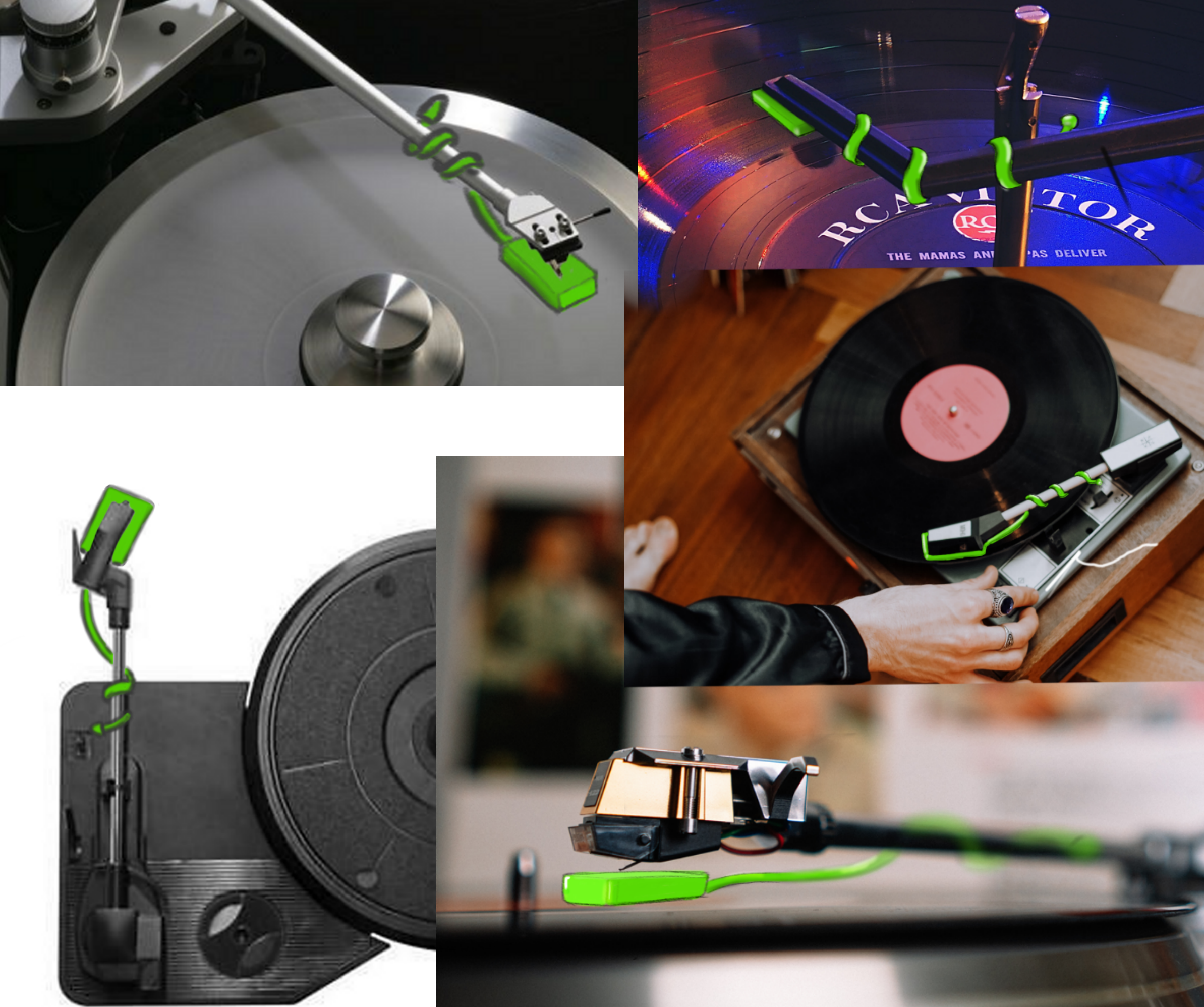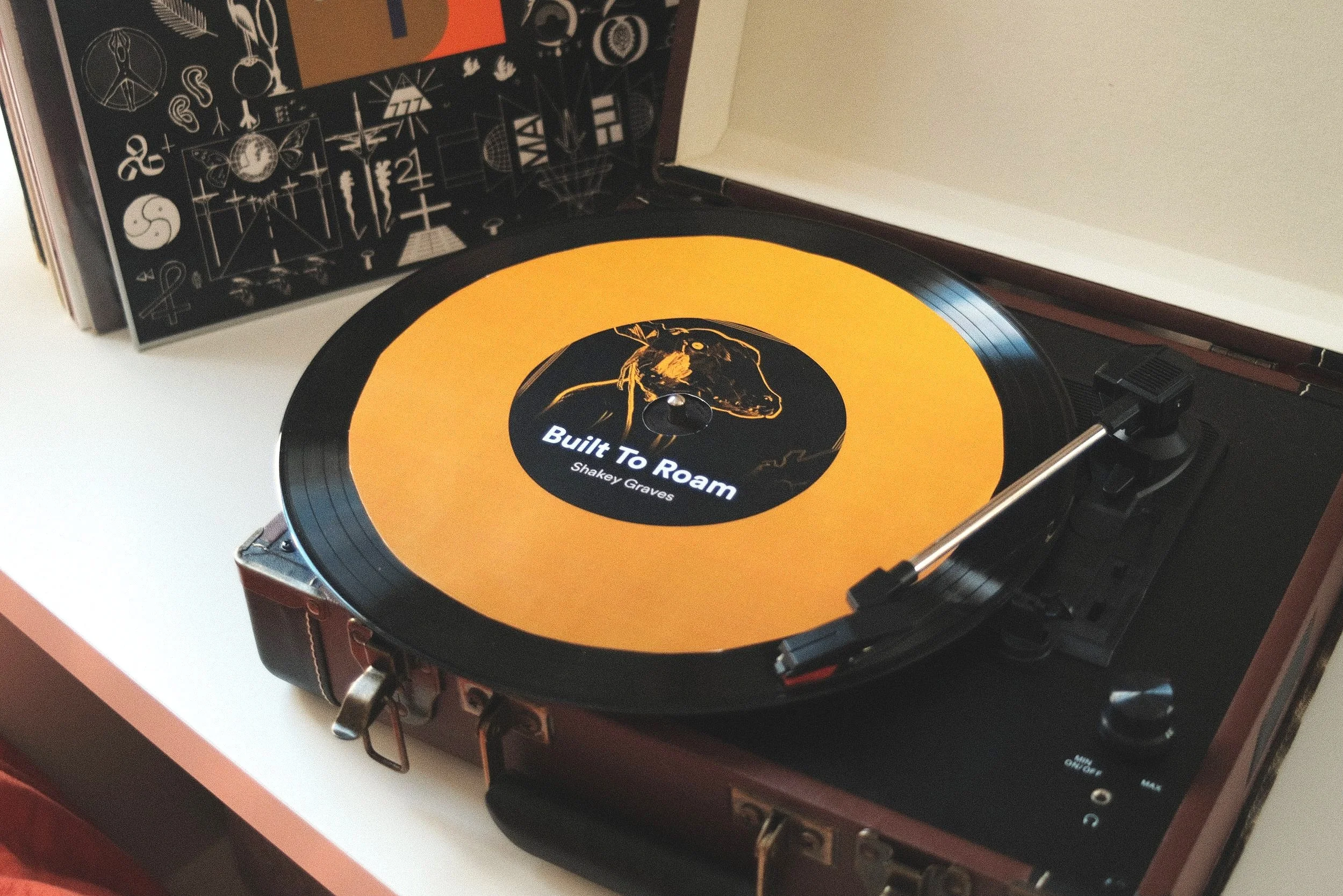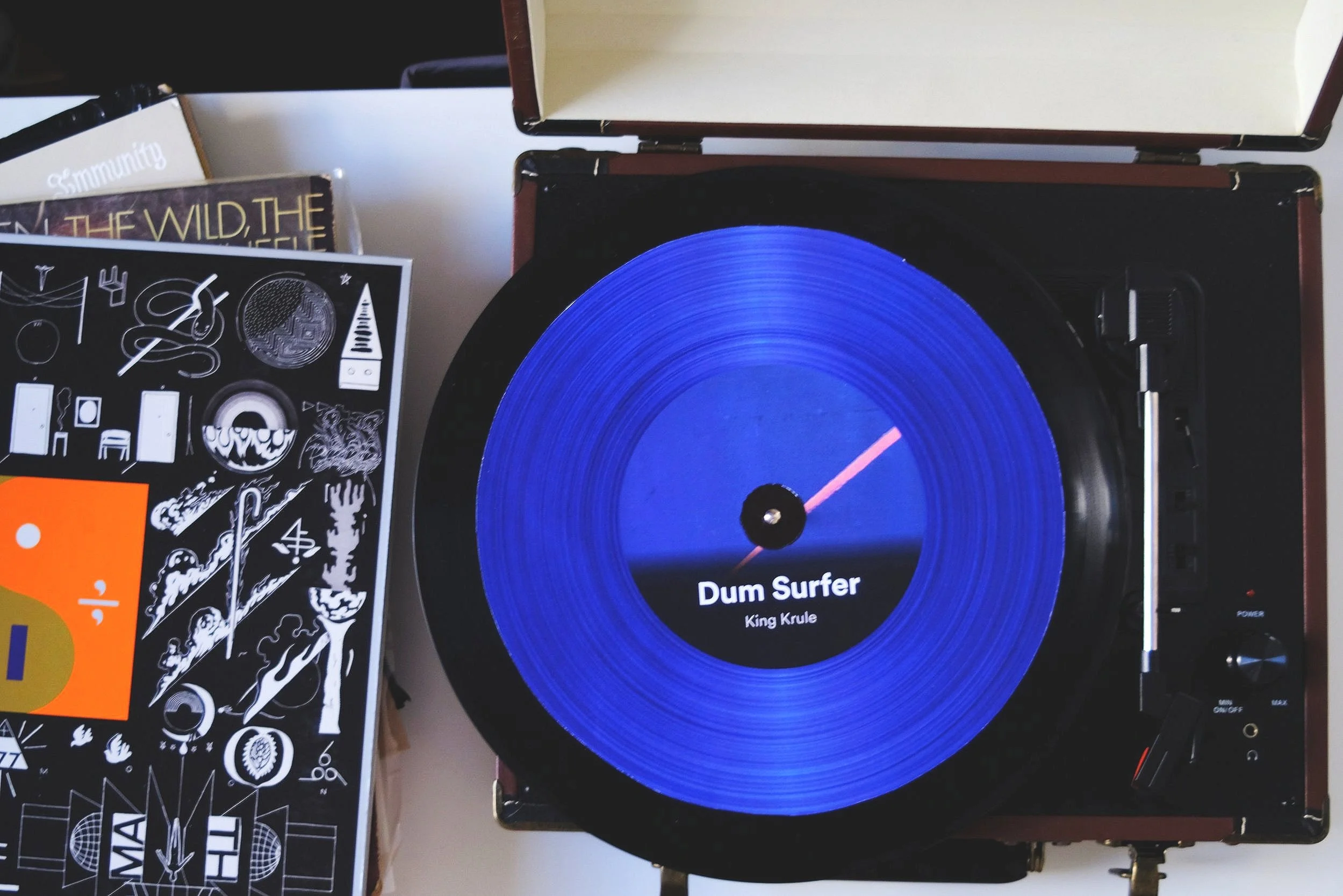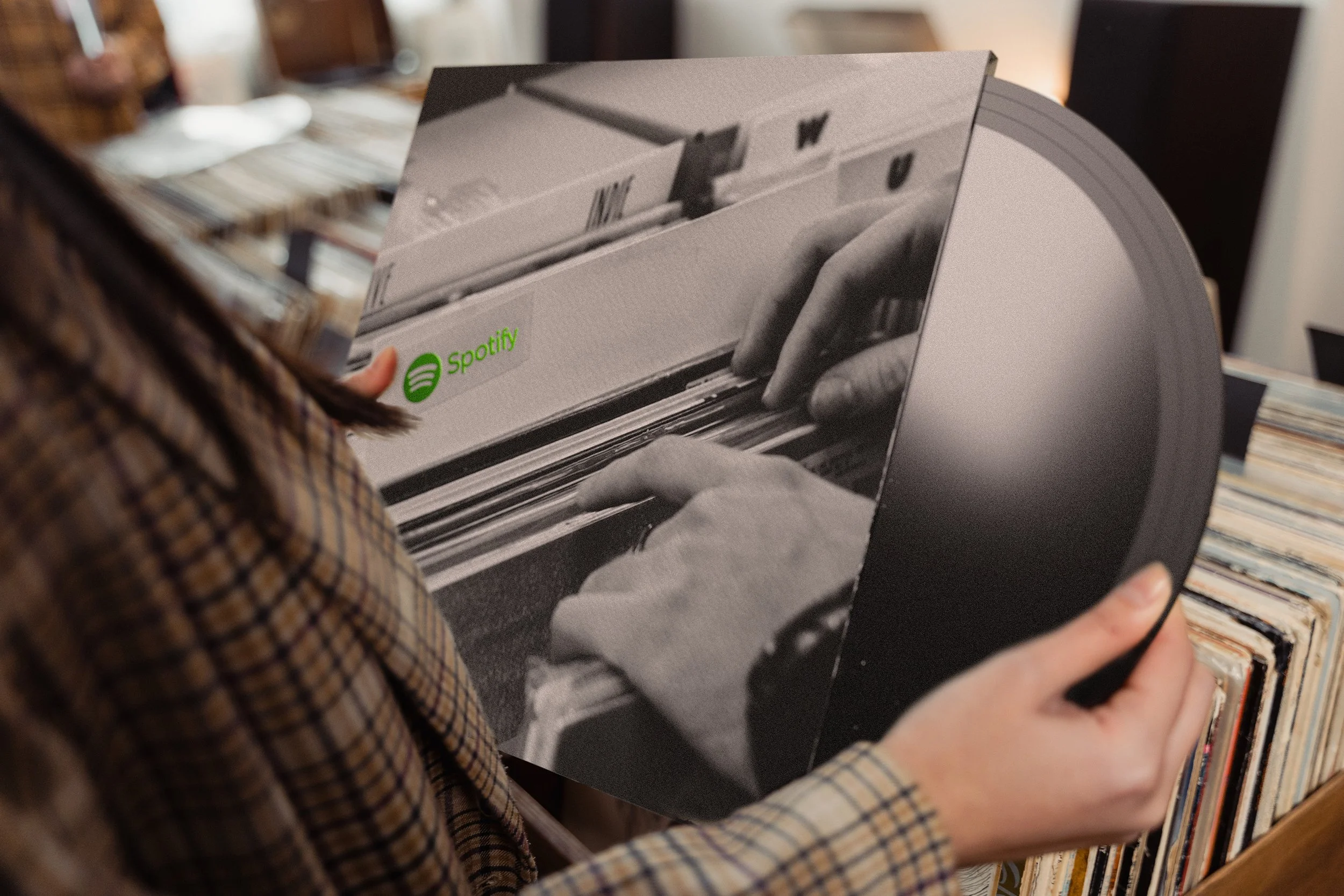
Spotify Crate Digger
Project Description
This project was born from explorations of the semantic relationships we have with certain products. Given my interests in music and music-making, I was drawn to exploring how we consume music, and how that has evolved. I decided to focus on vinyl records and streaming services.
The term “crate-digger” refers to someone who looks through crates of records at flea markets, record shops, or similar places for obscure or rare records, either to sample into their own song or to add to their collection. Nowadays, most music is not pressed. I see Spotify as a digital “crate” of music, giving its over 182 million users access to over 70 million songs.
The Spotify Crate Digger explores what it might look like if Spotify designed a physical product.
Project Type
Consumer Electronics
Roles
Product Designer / Experience Designer / UI Designer / Product Visualization
Project Angle
Exploring how a digital brand might make a physical product, focusing on the physical semantics of listening to music.
The Spark
What is it about vinyl records?
It was important to me to understand why others were drawn to vinyl records. However, in a pandemic it was difficult and unsafe to talk to people face-to-face. Instead I looked on reddit an internet forum.
In the vinyl subreddit, I posed the question about what people liked about vinyl records, especially in comparison to streaming services like Spotify.
What did people say?
“People like things.”
“I’d say it’s the sound for me, the little cracks and the sound of putting the needle down.”
“I think it’s the mindfulness of picking a record and committing to listening to the whole thing…”
The Materiality
The Sound
The Ritual
People really love the crackle, the warmth, and the imperfections that come with vinyl records.
While, at first, this answer seems snarky, in reality, it carries a lot of truth.
The physicality of the record attracts people. Owning this artifact and being able to interact with it is more attractive than tapping on a screen.
Some responses described their interactions with music as “mindless” and even “chaotic”. Vinyl forced them to be more present and intentional with the music they listen to.
Convenience and vast library of music
Tactile experience and ritual of vinyl
From these insights, I asked myself
How might we combine the …
When ideating, I focused on creating devices that would fit onto peoples’ existing setups, something audiophiles work to perfect over time.
The most important constraint was to make it fit onto any existing setup.
Concept 0
The first iteration is made up of a 3-part system.
The parts are:
The “record”, a device in the shape of a record, which plays music from your Spotify catalog. The device shows you what song is currently playing, represented by a barcode.
The sensor, which wraps around the tonearm and sits beneath the needle. The sensor reads the barcode on the screen and communicates with the receiver.
The receiver wirelessly takes the digital information picked up from the sensor and turns it into information that can be sent to your speaker system, through either a wired or wireless connection
Refining the concept
The idea tested well, but the components still felt incomplete.
The Branding
The Interaction
The act of putting a sensor between the needle and the “record” felt untrue to the essence of vinyl records. The beauty of the medium is the physical interaction of the stylus on the vinyl.
While I did borrow certain brand elements from Spotify, the overall graphic language did not evoke a sense of cohesion or familiarity.
Back to the drawing board
The first stage of the redesign was the screen’s new graphical interface. I borrowed from Spotify’s app, using the basic information of the song with a gradient that matches the color scheme of the album cover.
While prototyping, the rest of the redesign became increasingly clear.

Sometimes the most obvious answer is the correct one.
Instead of putting a sensor between the record and the stylus, it made more sense to put the sensor directly into the record.
This change makes the experience more familiar and natural.
Get in the groove
Adding a bigger bezel allows for more tech.
The two grooves have pressure sensors that afford listeners a range of actions, including playing, pausing, and skipping the songs, all within the turntable.
Like on vinyl, the grooves pick up dust, allowing for those pops that are so loved.
While the components are similar to the original iteration, placing the sensor in the grooves of the “record” instead of between allows for a more streamlined and authentic experience.
The casing is made from pellets from recycled vinyl records. The recycled vinyl gives the needle a familiar material to travel on, all while providing an environmentally friendly way to keep costs down.
Using recycled vinyl also provides the opportunity to have unique records for every unit, similar to the special edition vinyl that many collectors seek.
CMF
Packaging
To continue strengthening the semantic relationship, the packaging is a dust cover that’s similar to what someone would find with another vinyl record.
This also allows Spotify to explore a new and different point of purchase: record stores.
